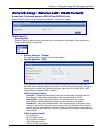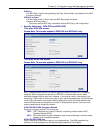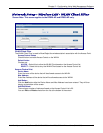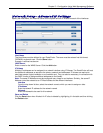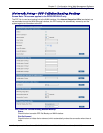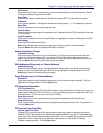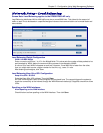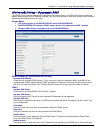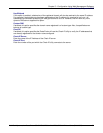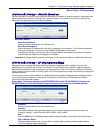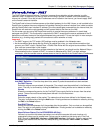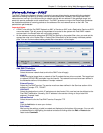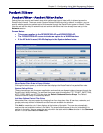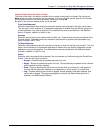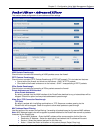
Chapter 5 – Configuration Using Web Management Software
Multi-Tech Systems, Inc. RouteFinder SOHO RF820/RF820-AP & RF830/RF830-AP User Guide (S000399E) 51
Network Setup > Dynamic DNS
Network Setup > Dynamic DNS
The DDNS Client is used to update the IP address of the modem/router in a DDNS server for the configured
domain name whenever the IP Address changes, thus, leaving the domain name to be pointing to the current IP
Address of the modem/router all the time.
Screen Notes:
•
This screen applies to the RF820/RF820-AP and the RF830/RF830-AP.
• The RF830/RF830-AP includes a WAN 2 section which is the same as the WAN 1 section.
• Dynamic DNS Failover is available only on the RF830/RF830-AP.
DDNS Failover (for the RF830/RF830-AP only)
Dynamic DNS Failover
Check the box to enable DDNS failover. This is valid only if both the interfaces, WAN 1 and WAN 2, are
configured with DDNS. When enabled, DDNS updates the IP Address of the failed link with that of the link
that is up. So both the FQDNs (Fully Qualified Domain Name) will be pointing to the same IP Address.
WAN 1
Dynamic DNS Client
Check the box to enable DDNS Client. Default = Disable.
Dynamic DNS Server
Enter the name of the IP Server to which obtained IP addresses will be registered.
Dynamic DNS Port
Enter the port number through which the DDNS has to update the server. By default, port 80 is used. This
port is configurable.
User Name
Enter the name of the user who will be allowed access the DDNS Server.
Password
Enter the Password the user will use to access the DDNS Server.
Domain Name
Enter the domain name registered with the DDNS server. The external world reaches the RouteFinder
when the Domain Name is configured.
Update Interval
Enter the interval in days after which the IP Address will be updated by the DDNS server. Default: 28 days.



